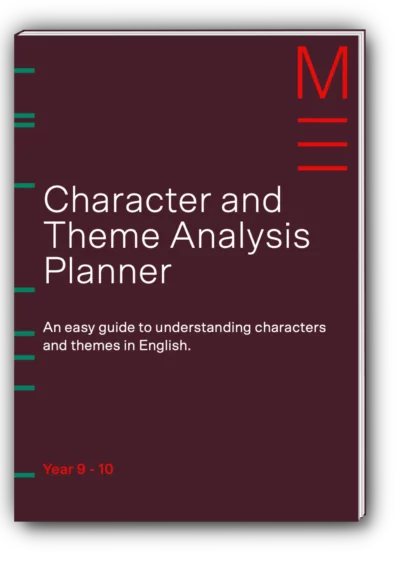Welcome to Matrix Education
To ensure we are showing you the most relevant content, please select your location below.
Select a year to see courses
Learn online or on-campus during the term or school holidays
Learn online or on-campus during the term or school holidays
Learn online or on-campus during the term or school holidays
Learn online or on-campus during the term or school holidays
Learn online or on-campus during the term or school holidays
Learn online or on-campus during the term or school holidays
Learn online or on-campus during the term or school holidays
Get HSC exam ready in just a week
Select a year to see available courses
Science guides to help you get ahead
Science guides to help you get ahead
Discover the top 5 literary themes for Year 9-10 English and learn how to analyse them like a pro.

Join 75,893 students who already have a head start.
"*" indicates required fields
Related courses
In this article, we’ll break down the top 5 literary themes you may come across in Year 9 and 10 English. We’ll also explain exactly how to analyse them effectively. By mastering these key themes in English, you’ll be well-prepared to boost your marks and write high-scoring responses.
Table of contents:
An easy guide to understanding characters and themes in English. Fill out your details below to get this resource emailed to you. "*" indicates required fields
Free Year 9-10 Character and Themes Analysis Planner

Free Year 9-10 Character and Themes Analysis Planner
In literature, a theme is the central idea or message the author wants readers to think about. It’s not just what happens in the story but what the story is really about at a deeper level.
Themes often reflect shared human experiences or ideas about life, society, or human nature. For example, themes like friendship, courage, or justice, are aspects of life we all experience.
Knowing how to identify and discuss themes is a valuable skill. It helps you connect with what the author is trying to say and shows you’ve thought about the story on a deeper level.
Quick definition: A theme is the main idea or lesson in a story. It’s what the story is “about” in a way that’s meant to make readers think.
In Year 9 and 10, studying themes helps you see what’s beneath the surface of a story. The Victorian English curriculum includes themes because they show how authors reflect on real issues.
For example, a theme like justice or friendship isn’t just an idea. It’s something that affects the characters and drives the story forward.
Learning to talk about themes in your English essays can really improve your marks. If you’re aiming for top marks, discussing themes shows that you understand the deeper layers of a text.
Here are some common themes in literature that you may see in Year 9 and Year 10 texts. Each one is followed by examples and ideas on how to analyse the writing themes.
If you’re aiming for high marks, go beyond just finding the theme and think about how the author shows it. More importantly, think about why the theme is there. Here’s a simple guide:
To uncover a theme, try looking beyond the obvious ideas and pay attention to underlying patterns or messages. Here are some ways to identify themes, including ones that other students might overlook:
Now that you’ve identified the theme(s), steps 2-5 show you what aspects you can look out for and include in your analysis to score higher marks.
Always use evidence from the text, like quotes or character actions, to substantiate your analysis.
Making a strong theme statement shows your understanding clearly. Here are some examples:
To make your theme statement stand out, try to show how the theme interacts with other elements, like symbolism or character arcs. Show why the theme matters within the story and to broader society.
Analysing literary themes at an advanced level not only helps you with Year 9-10 English but also builds skills like critical thinking, which are useful everywhere.
By mastering theme analysis, you can make powerful connections and present ideas clearly—skills that will help you stand out.
To help with your theme analysis, download our FREE Character and Theme Analysis Planner. It has tips and templates for simplifying characters, themes, and events to make your analysis clear and organised.
An easy guide to understanding characters and themes in English. Fill out your details below to get this resource emailed to you. "*" indicates required fields
Free Year 9-10 Character and Themes Analysis Planner

Free Year 9-10 Character and Themes Analysis Planner
Written by Matrix Education
Matrix is Sydney's No.1 High School Tuition provider. Come read our blog regularly for study hacks, subject breakdowns, and all the other academic insights you need.© Matrix Education and www.matrix.edu.au, 2023. Unauthorised use and/or duplication of this material without express and written permission from this site’s author and/or owner is strictly prohibited. Excerpts and links may be used, provided that full and clear credit is given to Matrix Education and www.matrix.edu.au with appropriate and specific direction to the original content.